After tackling thousands of design projects, you start to notice a few common faux pas in peoples’ homes. From too-high curtains to matchy-matchy furniture, certain design elements tend to throw people for a loop (and we totally get why).
We’d like to officially add mixing wood tones to this list. Time and time again, we see homes with one singular wood tone throughout, which can create a one-dimensional look lacking contrast (especially when paired with hardwood flooring). Picture: an oak dining table and matching wood chairs, or a low-slung TV stand that’s the identical stain to the wood flooring.
So, we’re officially offering you our complete guide to mixing wood tones like a pro. Ahead, Havenly designer Melissa Wagner breaks down the basics:
1. Identify your primary wood tone
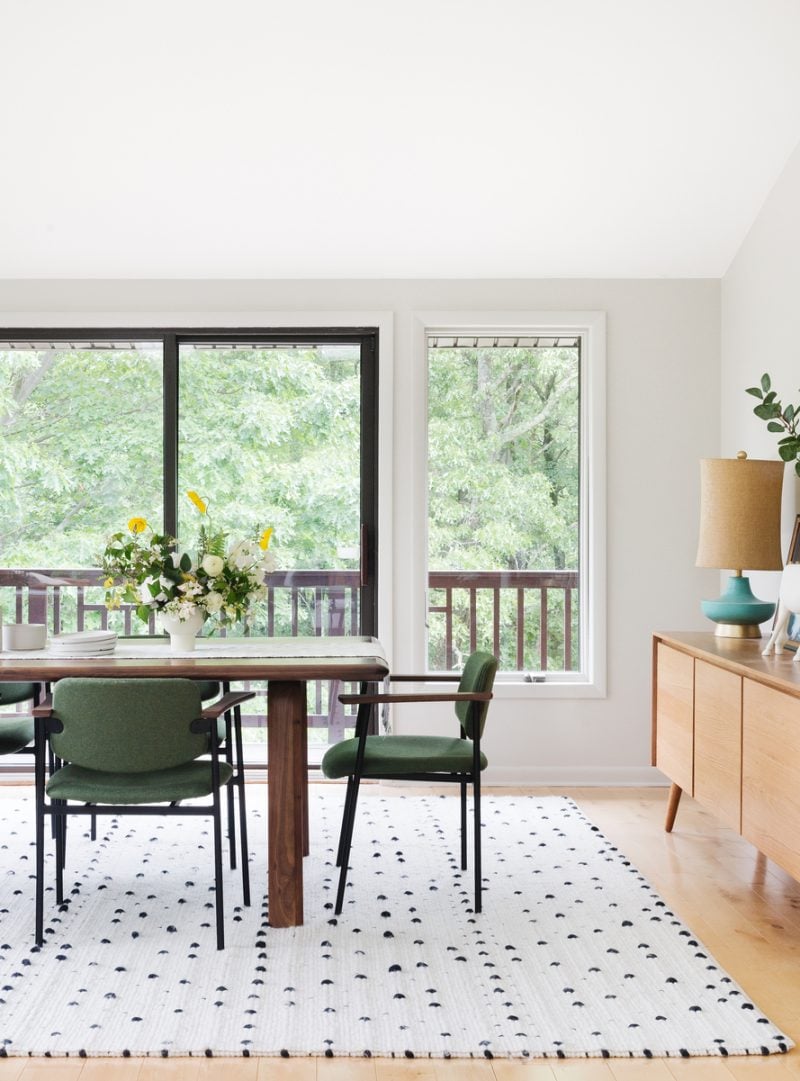
Mixing wood tones with ease requires a little designer know-how (that’s why we’re writing this, after all), and that starts with grounding your space with a primary wood tone. Have wood floors? Then it’s easy – that’s your dominant tone. Otherwise, look to the most prominent wood piece within your space to take the lead, whether that’s a statement sideboard, dining table, or bookcase. It’s important for the other wood tones you introduce to complement the main character. For example, if you have light oak wood floors, lean into similar warm tones (like sand and walnut) versus clashing with dusty driftwoods.
2. Go high-contrast
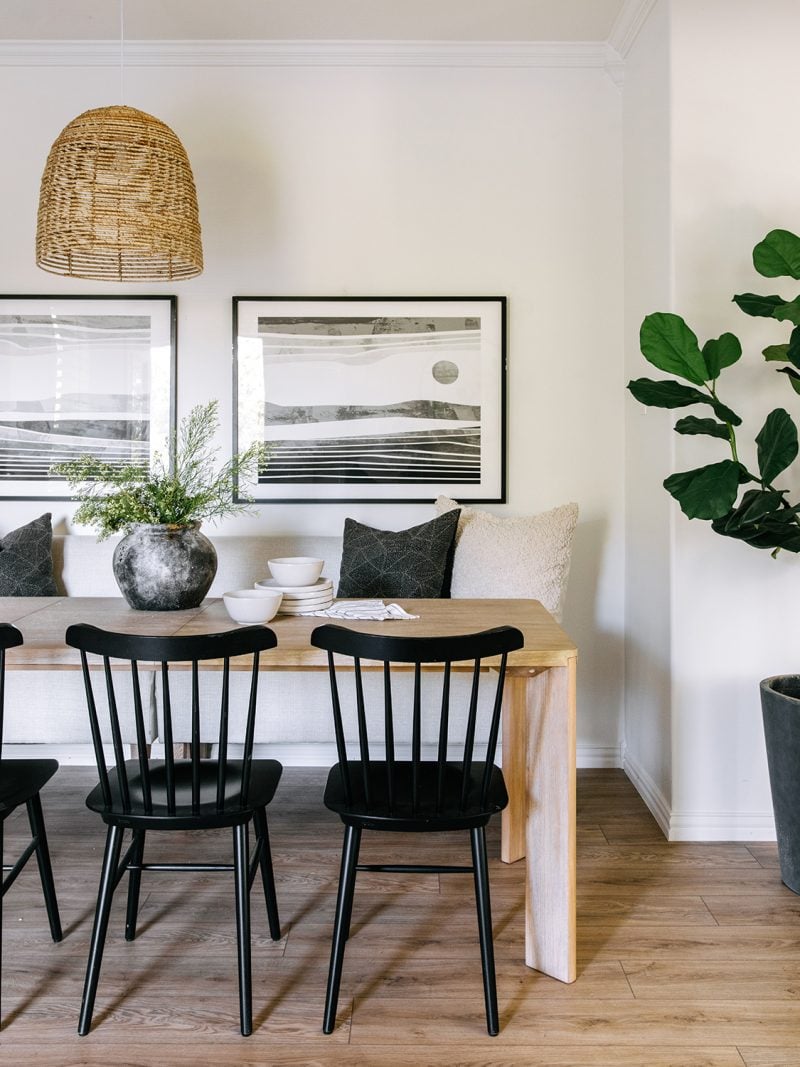
This is the most fun (and easy) method, if we do say so ourselves. Rather than layering wood pieces with a *very* similar finish (we see this “safe” approach all the time), do the polar opposite and embrace high-contrast wood tones. We’re talking black stained chairs against a driftwood-hued table, or a rich ebony coffee table paired with sand-toned side tables. This is a trademark designer move and will elevate your aesthetic instantly.
3. Embrace variety

Trying to find furniture with the *exact* same wood stain is nearly impossible (unless you’re shopping at one retailer, but that’s boring anyways). You’ll likely end up with three pieces that almost match, but not quite, for a more haphazard “missed it” feel. Our advice? Avoid the mishap entirely and embrace distinct variety in your wood tones — we love the black coffee table, warm walnut stool, and blonde TV stand in this den. It’s the balanced mix of light, medium, and deep wood tones that creates depth and interest.
4. Lean into a dominant color story
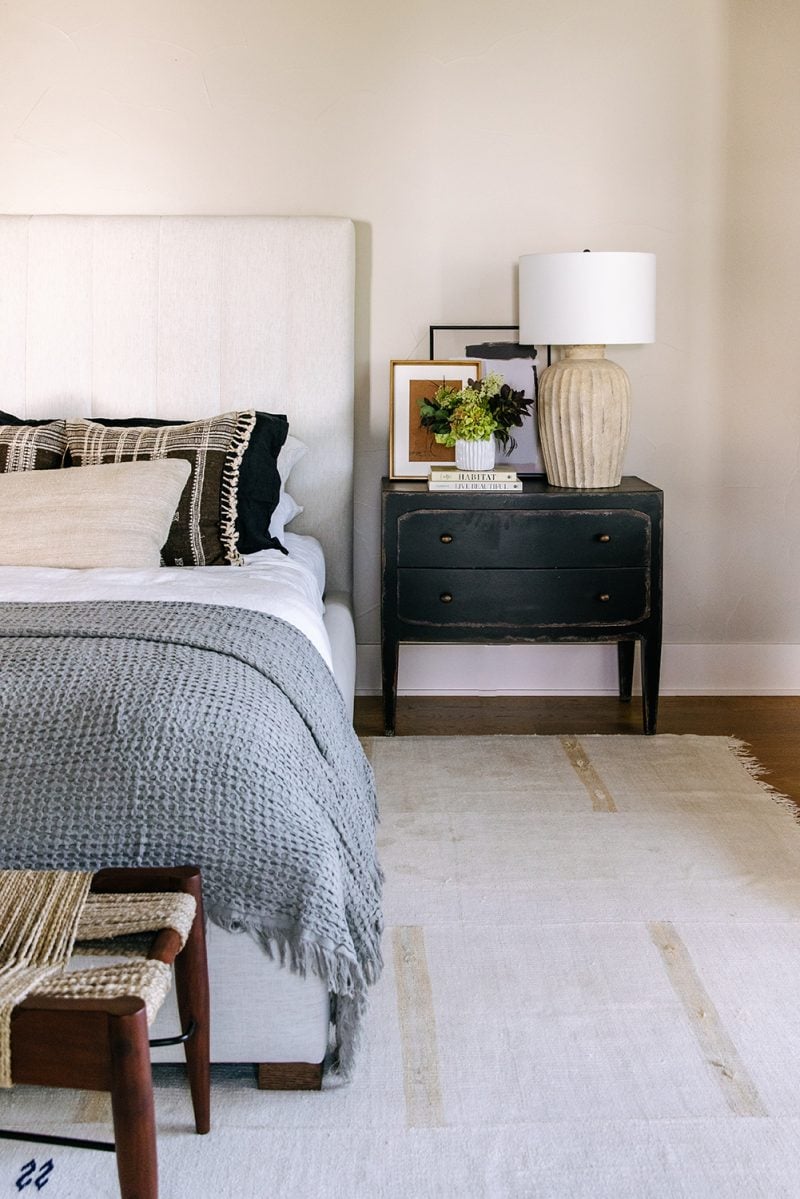
This is basically a happy medium between tip one and tip two. If you’re looking for something slightly cohesive but not matchy-matchy, embrace a general color story. For example, lean into different shades of dark woods (like the above bedroom with a black nightstand and walnut bench) or all light woods — this makes the mix feel intentional and curated.
5. Break it up with a rug
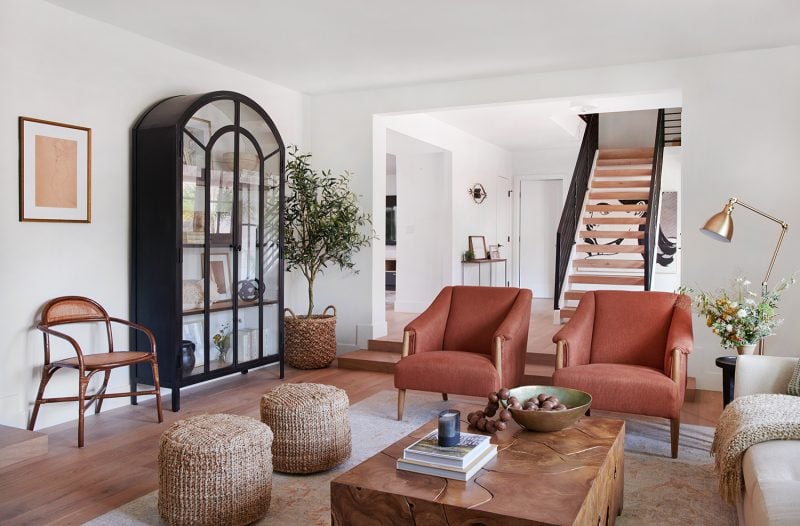
If you’re working with similar wood stains and want to break up the monotony, consider a visual palette cleanser in the form of a rug. In the above living room, for example, the slightly cool vintage rug cuts the warmth of the wood floors, walnut framed accent chairs, and wood coffee table, while the jute poufs add in a sandy softness. Also worth noting, the live-edge nature and richly grained texture of the coffee table also keep it from feeling too monotonous with the chairs.
6. Go tonal (but add contrast elsewhere)
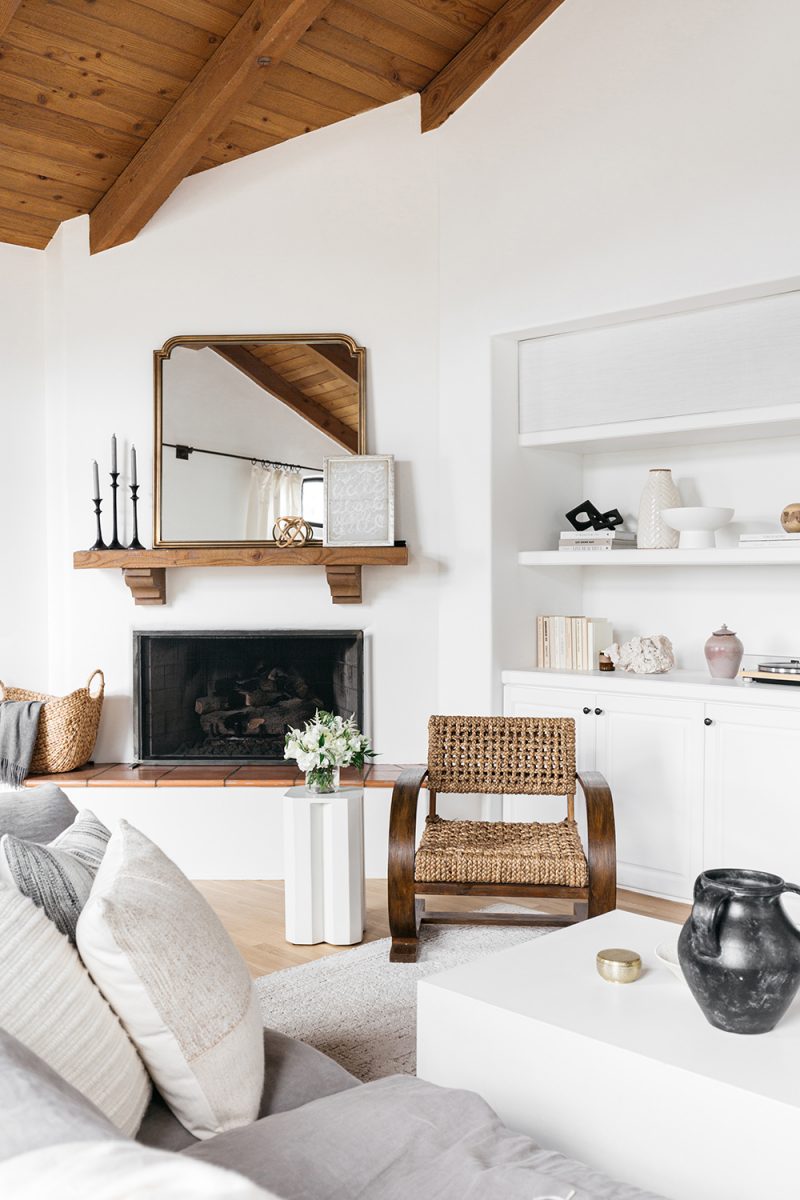
If you’re working with tonal woods, make the matchy-matchy look sing by adding (heavy) contrast elsewhere. For example, the above living space has wood ceilings, an accent chair, and a fireplace mantel from the same color family, but the high-contrast white walls, rug, couch, and coffee table breaks it up beautifully.
7. Vary shapes and sizes
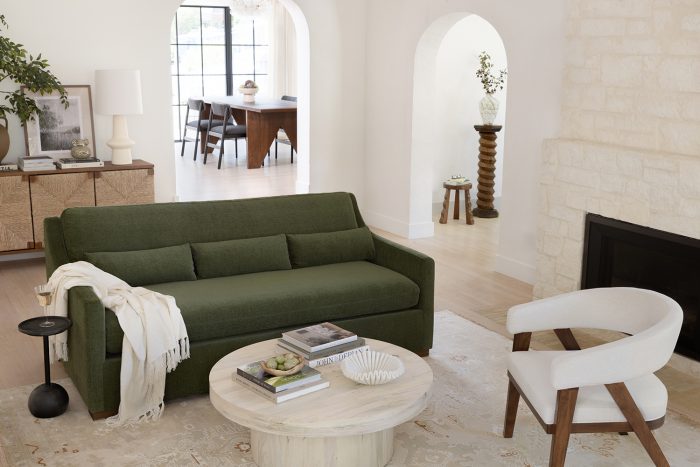
If you’re working with a singular wood tone, like dark walnut in the above living space, break up the visual monotony by varying shapes and sizes. While the wood credenza is your standard rectangle, the rounded wood accent chair, scalloped wood pedestal, undulating wooden stool, and sculptural dining table add visual interest and a unique artisan quality. Opting for unexpected forms like this is another way to break up visual monotony.
8. Add texture
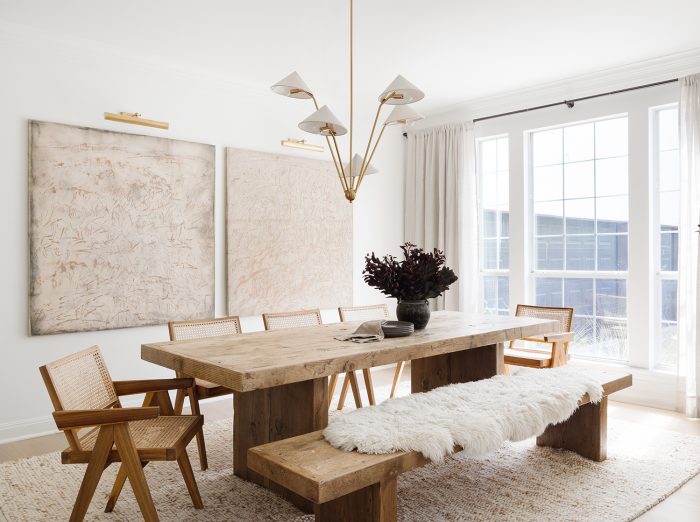
When it comes to wood, think beyond planks. Wooden flourishes like rattan, cane, wicker, and bamboo all offer that same natural, down-to-earth touch while adding much-needed texture and visual variation. When shopping for wood dining chairs, for example, consider a touch of cane or rattan (or even leather!) for a little something extra — both in terms of color and texture.
9. Play with lighting
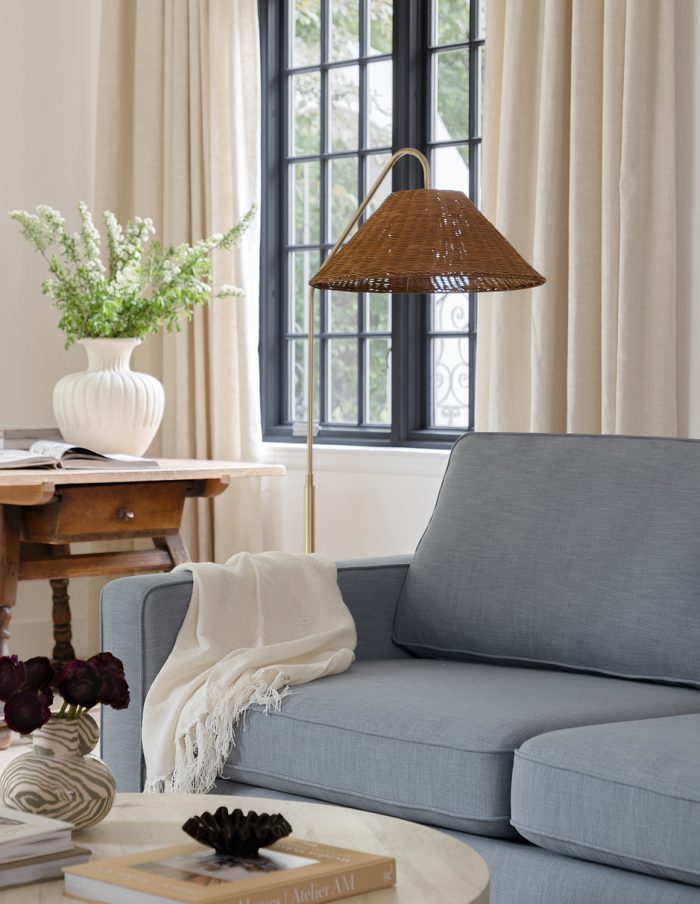
Wicker and rattan lighting has been trending for years now, and it’s a great way to add a unique, unexpected wood element to your space. Think beyond furniture and play with wood tones via table and floor lamps, wall sconces, pendant lights, and even chandeliers! Bonus: lighting is often more sculptural and visually interesting than your standard wood dining table.
From mixing wood tones to perfecting layout flow, our designers are chock-full of expert tips. Check out our design packages to work with a design pro one-on-one.

